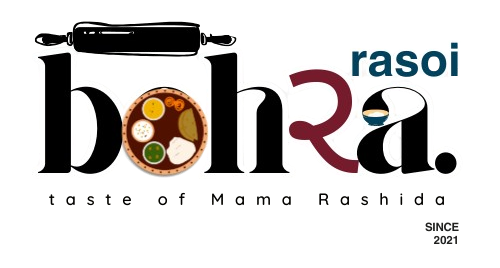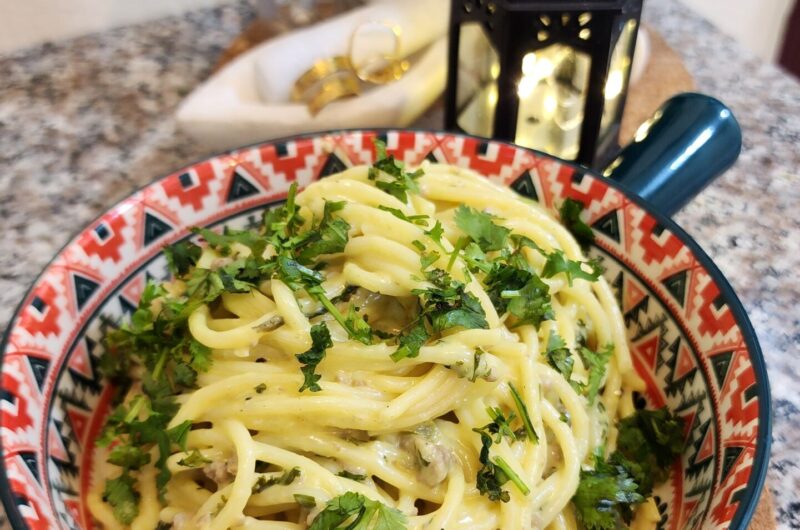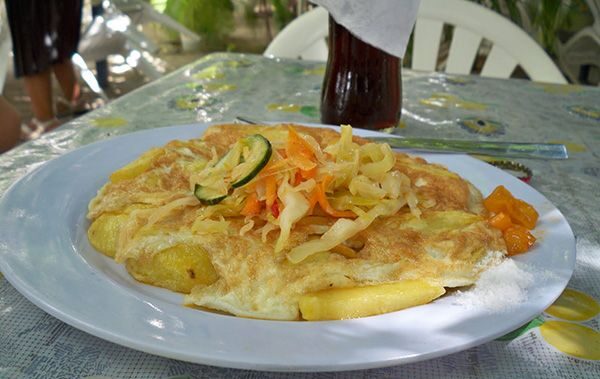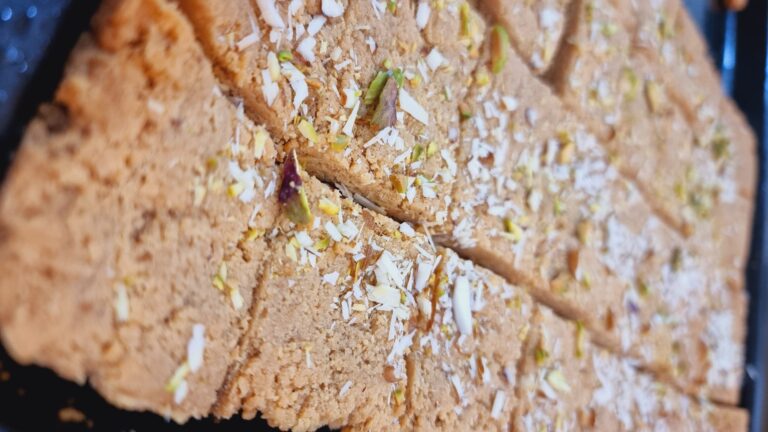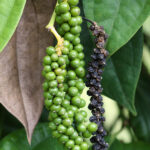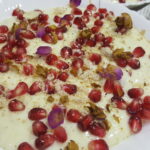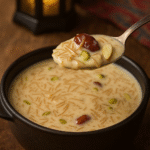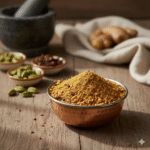The Best Fluffy Pancakes recipe you will fall in love with. Full of tips and tricks to help you make the best pancakes.
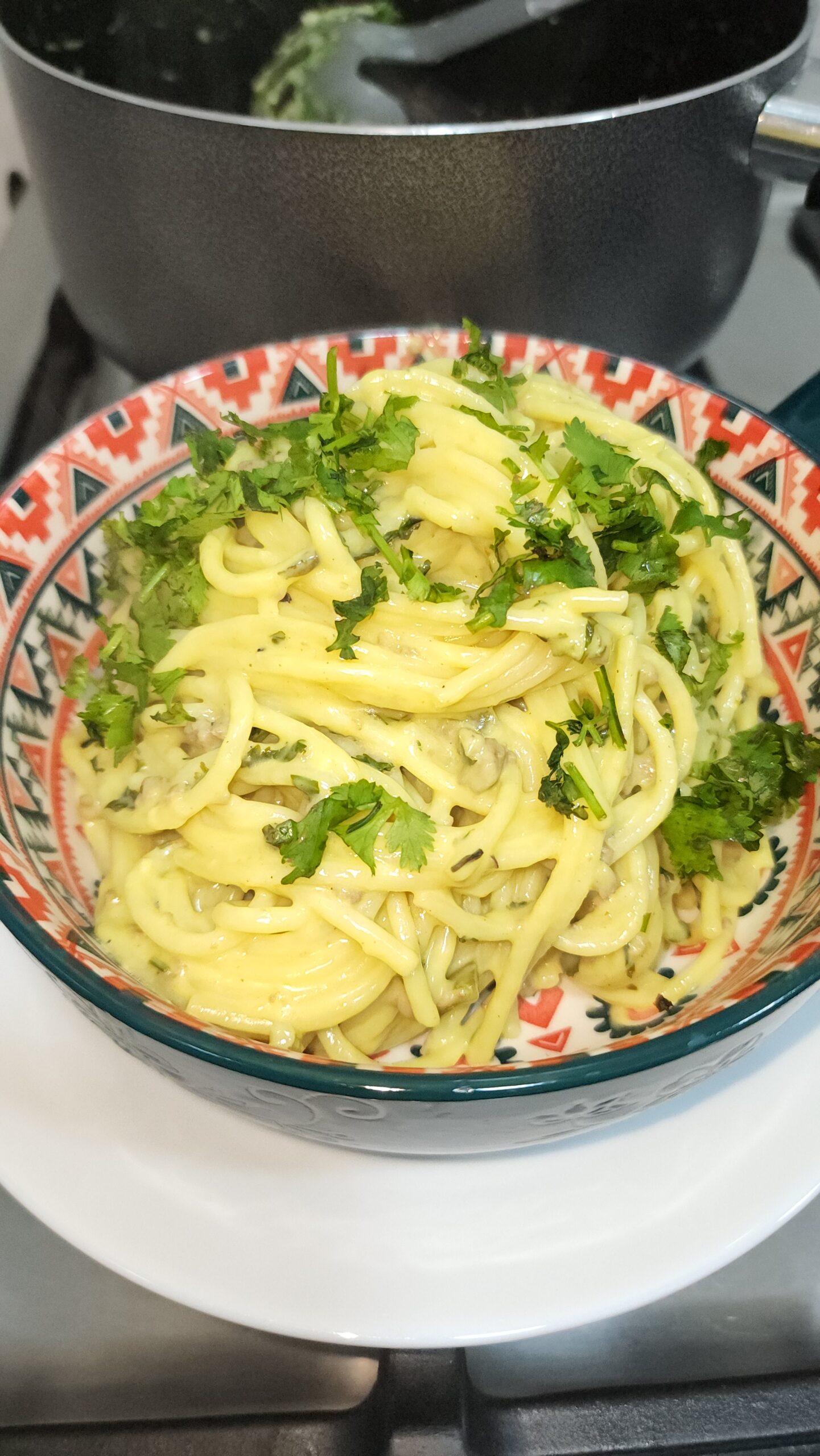
When you think of spaghetti, your mind probably drifts straight to Italy—tossed with tomato sauce, rich herbs, or creamy Alfredo. But did you know that East Africa has its very own version of spaghetti? On the Swahili Coast, especially in Kenya and Tanzania, spaghetti has been embraced and transformed into a dish that speaks to local tastes, culture, and history.
This Swahili style spaghetti is a flavourful twist—less about heavy sauces and more about fragrant spices, simple cooking, and soulful eating. It’s a dish that carries the story of Indian Ocean trade routes, cultural blending, and the Swahili love for comfort food.
Growing up along the Swahili coast, our kitchen was a melting pot of flavors—East African spices mingling effortlessly with Indian Bohra traditions. The moment my mother would start sautéing garlic and green chilies, I knew we were in for something special. And as the coconut milk thickened and the spaghetti absorbed the sauce, I’d sneak tastes, delighting in the comforting blend of familiarity and exotic flair.
Swahili-Style Spaghetti, also known as spaghetti ya Nazi, perfectly represents the culinary fusion of the Swahili coast—a marriage of Indian, Arabian, and African influences that continues to delight families across generations.
Ingredients & Their Importance
Pasta: The Heart of the Dish
- Spaghetti – My mother always used high-quality spaghetti, cooked al dente so it would hold up perfectly against the creamy coconut sauce. You can use whole wheat spaghetti for a healthier twist or regular durum wheat spaghetti for that classic texture.
Coconut Milk: Creaminess and Tradition
- Coconut Milk – The soul of this dish. My mother would shake the can well before use to ensure a smooth, rich sauce. Fresh coconut milk is ideal if you have access to it, but canned works wonderfully too. It balances the heat of the chilies and complements the butter beautifully.
Protein: Minced Meat Variations
- Pre-cooked Minced Meat – We used beef, chicken, or lamb, depending on what was available. Each brings a unique depth:
- Beef – Rich and hearty
- Chicken – Lighter and quicker to cook
- Lamb – Deeply flavorful, slightly gamey
- Halal-certified meat is essential, not just for dietary reasons but to honour the traditions of Bohra cooking.
Aromatics & Spice
- Garlic & Ginger – Freshly minced for maximum aroma
- Green Chilies & Scotch Bonnet – Adjustable heat; the Scotch bonnet adds a punch reminiscent of coastal street flavors
- Coriander Leaves – A fresh, vibrant finish
- Lemon Juice – A final zing to brighten the creamy sauce
Each ingredient carries a story, from the coconut groves along the Swahili coast to the spice merchants of India. Together, they make a dish that’s comforting, quick, and deeply flavorful.
Quick Cooking Tips for Authentic Flavor
- Pasta Perfectly Al Dente – Follow the package directions but taste-test a minute before the recommended time.
- Heat Balance – Adjust chilies carefully; Scotch bonnet is potent.
- Butter & Coconut Milk Harmony – Melt butter first to coat aromatics before adding coconut milk for a richer flavor.
- Reserve Pasta Water – Adds silkiness to the sauce if needed.
- Fresh Ingredients – Always use fresh ginger, garlic, and coriander for maximum aroma.
How to Make Swahili-Style Spaghetti (Mother’s Method)
Swahili-Style Spaghetti in Coconut Sauce
Course: Main Course, PastaCuisine: Swahili, Bohra CuisineDifficulty: Easy4
servings30
minutes40
minutes300
kcal1
hour10
minutesCreamy Swahili Style Coconut Sauce Spaghetti – tender pasta tossed in a rich, aromatic coconut sauce with subtle spices, perfect for a comforting meal.
Ingredients
* 500g spaghetti
* 2 cups coconut milk
* 2-3 whole green chillies
* 1-2 scotch bonnet peppers (optional, for extra heat)
* 2-3 garlic cloves, minced
* 1 tbsp ginger, grated
* Salt and pepper to taste
- Pre-cooked:
* 250g minced meat (beef, chicken, or lamb)
* 1 tbsp coriander leaves, chopped
* 2-3 tbsp lemon juice
* 2-3 tbsp unsalted butter
Directions
- Cook the spaghetti in boiling salted water until al dente. Drain and set aside.
- In a large pan, melt the butter over medium-high heat.
- Add the minced garlic, ginger, whole green chillies, and scotch bonnet peppers (if using), and sauté for 1-2 minutes until fragrant.
- Pour in the coconut milk and bring to a simmer.
- Add the pre-cooked minced meat to the pan and stir to combine.
- Add salt and pepper to taste.
- Add the cooked spaghetti to the pan and toss with the sauce until the spaghetti is coated evenly.
- Let the spaghetti simmer in the sauce for a few minutes until the sauce has thickened slightly.
- Add the chopped coriander leaves to the pan and stir to combine.
- Pour in the lemon juice and stir to combine.
- Serve hot and garnish with extra coriander leaves, if desired.
Serving Suggestions
Swahili-Style Spaghetti is perfect on its own for a quick, satisfying meal. For a more festive experience, pair it with:
- A side of kachumbari (tomato-onion salad with a hint of lemon)
- Toasted garlic bread for soaking up the coconut sauce
- A squeeze of extra lemon juice or a sprinkle of green chilies for spice lovers
Pro & Kitchen Tips
- Make Ahead: Pre-cook the minced meat for even faster assembly.
- Freezing: Spaghetti is best eaten fresh; freezing can change the texture slightly.
- Equipment: A wide pan allows the sauce to coat spaghetti evenly.
- Sauce Adjustments: Use reserved pasta water if the sauce is too thick.
- Butter Hack: Finish with a small cube of butter for silky richness.
Family Memories & Swahili Roots
This dish was my mother’s go-to whenever she needed something quick yet comforting. I remember rainy afternoons when I would watch the steam rise from the coconut sauce as she stirred, and I’d wait impatiently for the first taste. The creamy coconut, the heat from the chilies, the tang of lemon—it was simple but extraordinary.
Swahili-Style Spaghetti is more than a fusion of flavors—it’s a bridge between East African coastal cuisine and Bohra culinary traditions. Each bite is a reminder of warmth, family, and the creativity that arises from combining cultures.
Swahili style spaghetti isn’t just a dish—it’s comfort on a plate, a reminder of busy weeknights, and a true reflection of East African creativity in the kitchen. Whether you make it with meat, vegetables, or keep it plain, one thing is certain: it will always be filling, flavourful, and deeply satisfying.
So the next time you boil spaghetti, forget the heavy Italian sauces. Try this Swahili twist instead—and taste how East Africa made spaghetti its own.
👉 I’d love to hear from you—how do you cook your spaghetti at home? Do you prefer it simple and spiced, or saucy and rich? Share your version with me—I might just feature your story in my next blog!
📩 I’d love to see your recreations! Share your Swahili-Style Spaghetti with me at business@bohrarasoi.com or tag me on Instagram @eastafrican.foodie and @bohrarasoi. Let’s keep our Swahili Bohra culinary heritage alive together.
